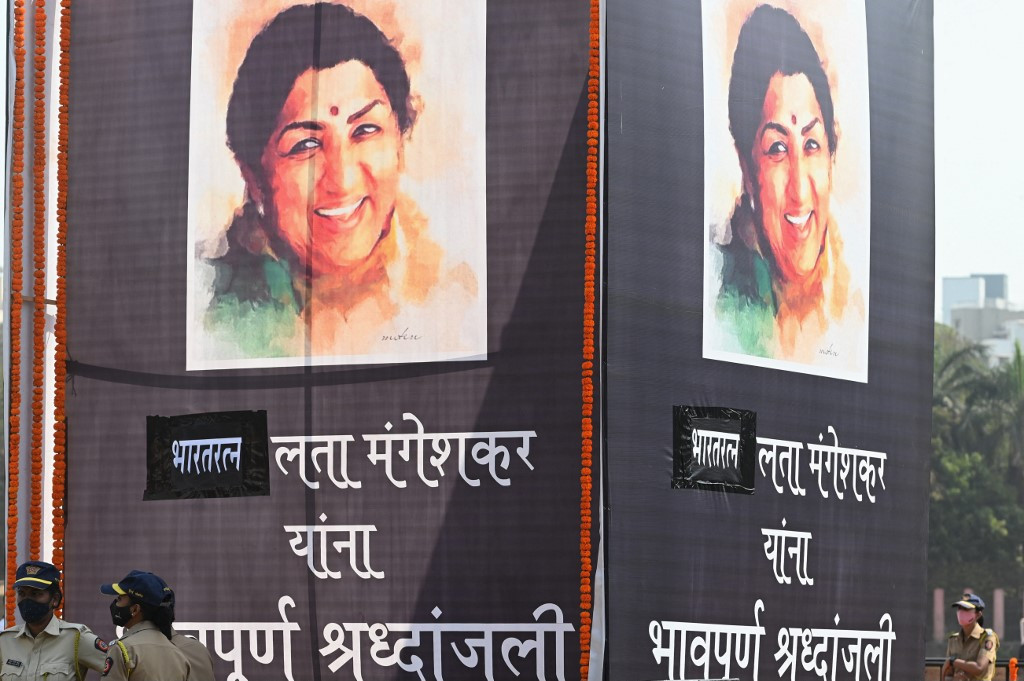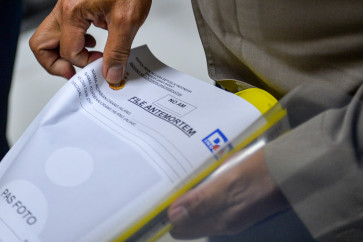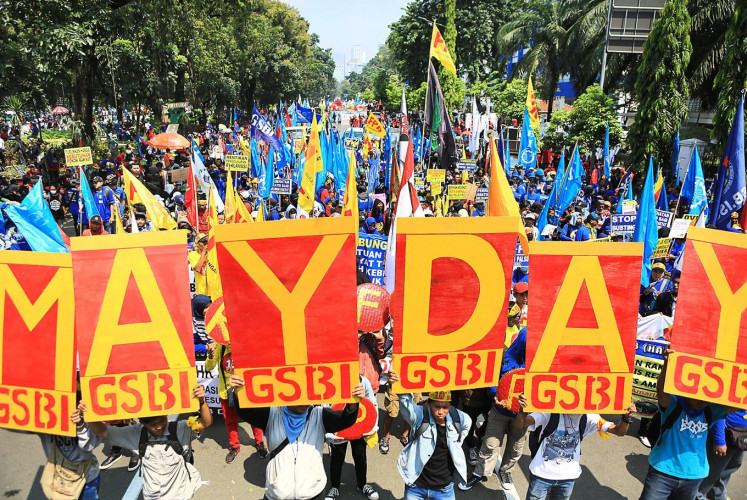Lata Mangeshkar, Bollywood and dangdut
While the passing of a legendary Bollywood singer may seem, at first glance, to have little to do with Indonesia, the "Nightingale of India" has left an indelible mark on the birth and evolution of one of the country's most popular musical genres: dangdut.
Change text size
Gift Premium Articles
to Anyone

News about the death of Indian singer Lata Mangeshkar has generated little response in Indonesia, if any.
The passing of a 92-year-old Bollywood playback singer will certainly not raise the curiosity of younger music fans who mostly lean toward Olivia Rodrigo or Taylor Swift.
And for older pop music fans, Mangeshkar was certainly not as familiar to them as her sister Asha Boshle, who was immortalized in the late-1990s’ “Brimful of Asha”, a Brit Award-winning hit by indie rock band Cornershop.
Among the small number of Indonesians who paid tribute to Mangeshkar last weekend was Rhoma Irama, the self-styled “king of dangdut” who posted a video on his YouTube channel, expressing his grief while also recounting the first time he heard Mangeshkar’s lilting vocals on the radio.
“My first exposure to an Indian song was through Lata Mangeshkar. Ever since I first heard it, I fell in love with Indian music,” Rhoma says in the video.
Ever since that first encounter with Indian music, Mangeshkar became Rhoma’s muse, the singer-songwriter incorporating elements of her Bollywood music into his brand of Malay music that later grew into the massively popular genre of dangdut.
Many who argue that dangdut is a musical genre indigenous to Indonesia would likely balk at the notion that foreign influences are part of its DNA.
But truth of the matter is that dangdut, especially the type that Rhoma performed and recorded, is an amalgamation of many foreign influences, from Indian and Middle Eastern music to hard rock and American rock ‘n’ roll, fused with Malay elements.
And those who paid close attention to Rhoma’s musical evolution will certainly have traced the heavy dose of Mangeshkar’s brand of Bollywood music.
As Rhoma told us, it all began in the 1950s.
Shortly after Indonesia gained independence, Indian movies dominated the local market. The demand for Indian movies was so high that Indonesian producers hired Bollywood directors for productions that were basically local adaptations of famous Indian movies.
Indian movies were so popular that it even spawned a campaign to resist the production and consumption of Indian or Bollywood-inspired movies. Key figures in this campaign included Usmar Ismail, the father of the modern Indonesian language.
Growing up in the 1950s, Rhoma and his peers who later became the leading figures in the dangdut movement, such as A. Rafiq, Elvy Sukaesih and Ellya Khadam, were exposed to these Indian song-and-dance movies. And since Mangeshkar’s vocals provided the musical accompaniment to most of these movies – her work appears in more than 1,000 movies – she became a role model for them.
Ellya was one of the first performers to proudly wear her Indian influence on her sleeve. One of her earliest recorded songs, “Termenung”, which ethnomusicologist Andrew Weintraub of the University of Pittsburgh called “proto-dangdut”, is based on “Chhup Gayaa Koii Re Duur Se Puukar Ke” as sung by Mangeshkar for 1957’s romantic movie, Champakali.
“Elyya Khadam modeled her vocal style, stage movements and costumes after Indian singers and movie actors,” Weintraub writes in “Soundtrack for the Masses: Transmediating India in Dangdut Movies of Indonesia”, a chapter he contributed to Making Waves (University of Hawai’i Press: 2018).
Weintraub considered that song to be the defining moment when the more traditional genre of orkes Melayu (Malay orchstra) mutated into dangdut. “The naming of the dangdut genre did not occur until the early 1970s,” he writes.
As for Rhoma, who would soon transform himself into the biggest star of dangdut, he composed many of his dangdut songs that mirrored the call-and-response style of Bollywood soundtracks with Ellya and Elvy.
Rhoma, who also dabbled in film production from the mid-1970s through the early 1980s, modeled his productions after Bollywood movies, in which singing and dancing make up an indispensable part of the story line.
In the early 1990s after years of chasing his muse, Rhoma managed to persuade Mangeshkar to sing a number of solo and duet compositions he wrote for four albums released between 1992 and 1996 in Indonesia.
Her vocal renditions on songs like “Musim Bercinta”, “Di Tepi Pantai” and “Wahai Pesona”, with Mangeshkar singing in Indonesian, certainly don’t count among her best, as Rhoma’s sparse arrangements appear to have limited her range.
Despite some flaws, these albums nevertheless represent an important cultural milestone: The moment dangdut came full circle after years of transmutation, from the first Bollywood movie projected on Jakarta’s screens in the early 1950s.
Today, dangdut has grown into a different kind of music than its early years, incorporating diverse traditional and modern elements, yet it continues to be the biggest and most accessible Indonesian musical genre.
And for that, we're indebted to the “Nightingale of India”.









